Dyers Mazegill / Summer/ Autumn / Inedible
Prepare to enter the realm of nature’s artistic marvels as we delve into the world of the Dyers Mazegill (Phaeolus schweinitzii), an inedible mushroom that captivates with its intricate beauty.
Join us on a journey of discovery as we explore the fascinating characteristics and unique attributes of this enigmatic fungus. With its vibrant hues of gold, orange, and brown, the Dyers Mazegill stands as a testament to nature’s creativity.
While inedible, it offers a world of value beyond the culinary realm. Learn about its preferred habitats, study its distinctive features, and uncover the historical significance of its dyes. From its ability to produce rich pigments to its potential use in artistic endeavours, this mushroom showcases the wonders of nature’s palette.
Whether you are a nature enthusiast, an artist, or a curious mind, let the Dyers Mazegill inspire you to appreciate the intricate marvels that nature presents. Immerse yourself in the beauty of this inedible fungi and celebrate its role in shaping the artistic tapestry of the natural world.
Scientific Name
Phaeolus schweinitzii
Common Names
Dyers Mazegill, Velvet-top fungus, Dyer’s polypore, Pine dye polypore
Family
Fomitopsidaceae
Habitat and season
They are a parasitic species and cause brown rot that degrades the cellulose in trees. Fairly common throughout the UK growing on conifers such as Pine, Spruce and Larch.
Identifying Features
A large bracket fungus that grows in overlapping tiers at the bases of trees. They are classed as inedible, they may contain toxins but their avoided really because of their bitter taste and tough texture. They can be used for creating natural dyes.
Fruit body
They don’t have a regular cap or gills, the fruit body starts as a small globular, bright yellow lump. As they age they become more fan or shelf like and darken in colour but at their growing edge they will still be yellow and soft. The tops are concentrically grooved and are covered in velvety hairs. The underside is covered in tiny irregular, pores that look a little like a maze hence Mazegill. The pores are yellow but will darken when damaged. The main growing period is in summer and autumn but they do survive all year round often turning black in winter.
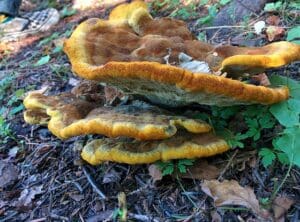
Stem
They have a short, thick, dark stem.
Smell
No real smell.
Spores
White to yellow.
Known hazards
There is debate about whether this is a toxic species, so it’s not one that we would recommend, even if it is non-toxic it’s bitter and has a tough texture so at best it’s not worthwhile.
Could Be Confused With
It could be confused with other Polypore’s but the velvety texture of the Dyers Mazegill is a good ID feature, the most similar looking fungus is the Chicken of the Woods (Laetiporus sulphureus) it’s a similar colour but has a softer texture and it’s mostly found on Beech and Oak trees. (The only conifer it grows on is Yew)
Edible Use
None, there is debate about whether this is a toxic species, so it’s not one that we would recommend, even if it is non-toxic it’s bitter and has a tough texture so at best it’s not worthwhile.
Notes on Herbal Use
None known.
Extra notes from the Foragers
The scientific name is schweinitzii is in honour of the American mycologist Lewis David von Schweinitz (1780-1834), who is considered to be the father of mycology in the USA.
The common name Dyer’s Mazegill comes from its historic use in dyeing yarn. Various shades of yellow, orange and brown can be obtained, depending on the age of the fruit body and the type of metal used as a mordant to bind the dye to the fabric.
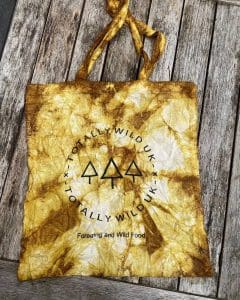
Reference:
https://www.first-nature.com/fungi/phaeolus-schweinitzii.php
https://en.wikipedia.org/wiki/Phaeolus_schweinitzii
https://en.wikipedia.org/wiki/Lewis_David_de_Schweinitz



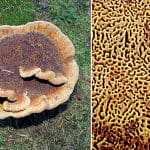
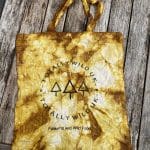
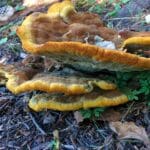
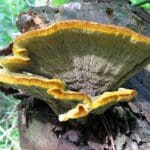
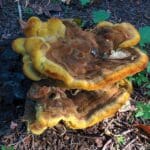
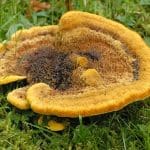



Leave a Reply
You must be logged in to post a comment.